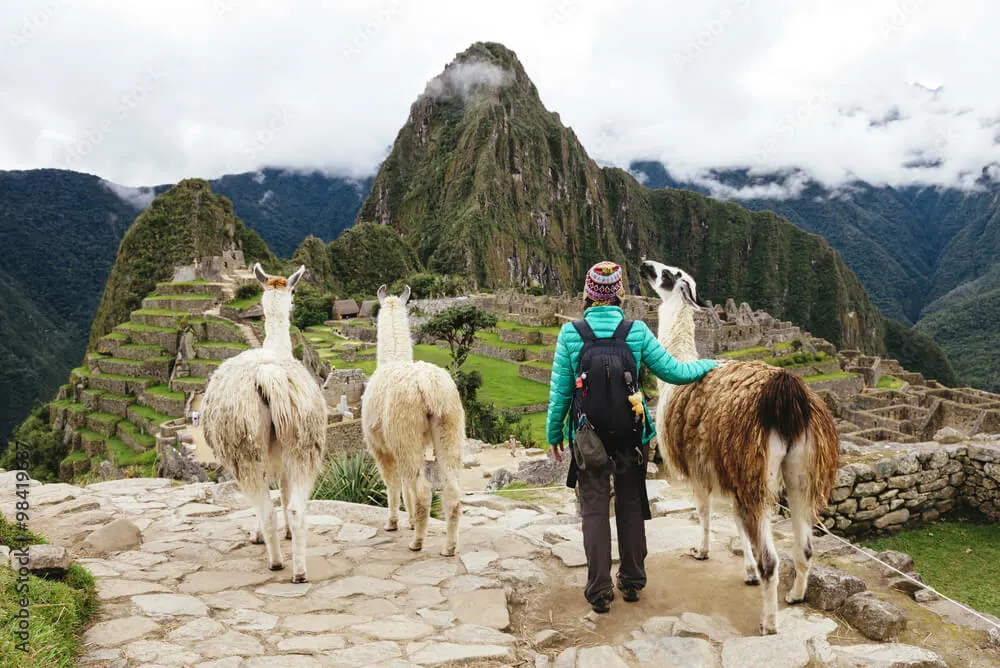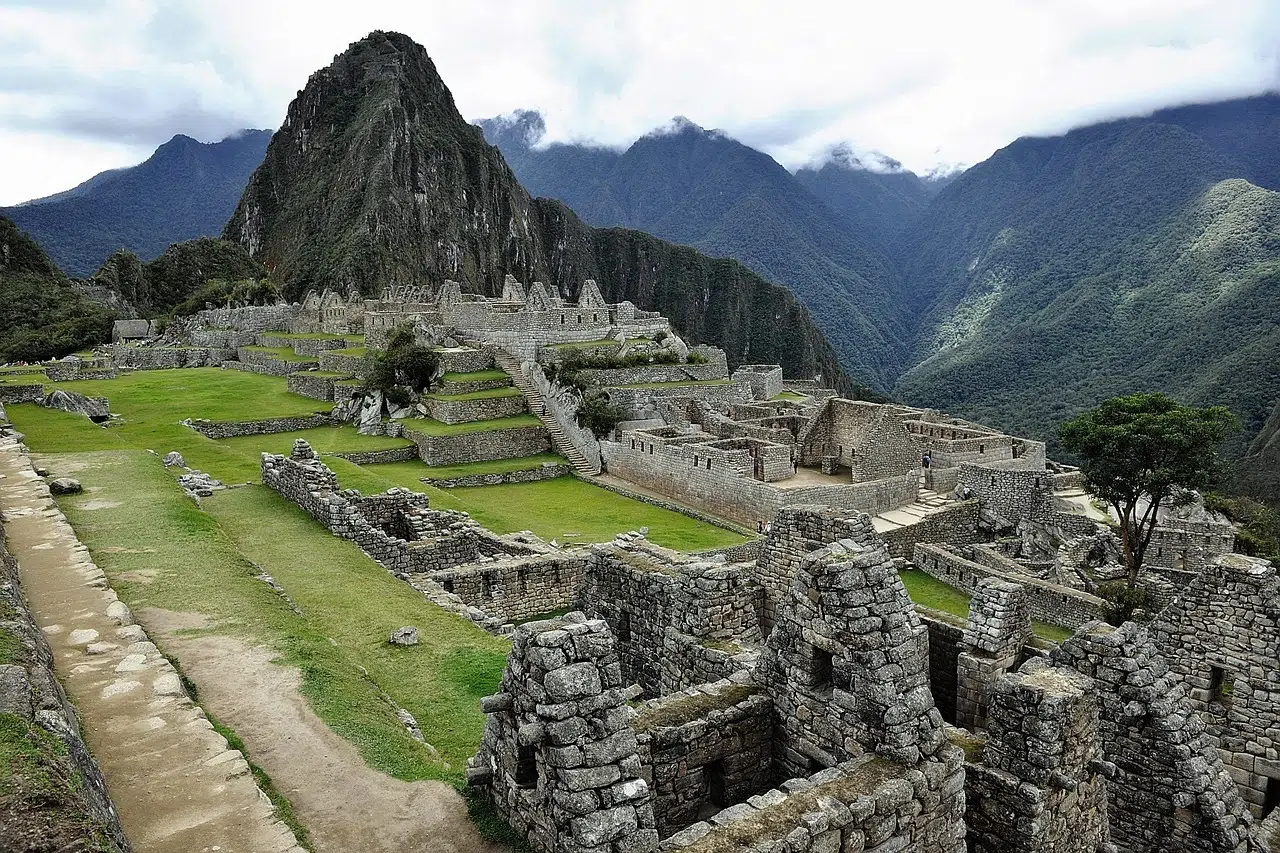Embark on an unforgettable adventure that blends history, culture, and nature.
The Inca Trail is more than just a hiking route—it’s a spiritual journey that leads adventurers through the heart of the ancient Inca Empire. Traversing through stunning landscapes, cloud forests, and majestic ruins, this path ultimately brings travelers to the awe-inspiring Machu Picchu. It’s one of the most famous and sought-after trekking experiences in the world, where history and adventure intertwine to create a life-changing experience.
Table of Contents
What is the Inca Trail?
The Inca Trail was once a sacred pathway used by the Inca civilization, linking their capital, Cusco, with religious and administrative sites across the Andean mountains. Part of the larger Qhapaq Ñan, a vast network of roads built by the Incas, the Inca Trail weaves through some of the most spectacular landscapes and ancient ruins. Today, hiking the trail is a way to immerse yourself in this incredible history, walking the same steps as ancient messengers and nobles on your way to Machu Picchu.
The Classic Inca Trail Route
The Inca Trail to Machu Picchu is traditionally a 4-day trek, starting from Km 82, following winding paths through Andean peaks and lush cloud forests. Highlights include:
- Wiñay Wayna, a stunning archaeological site with terraces and intricate stonework.
- Inti Punku, also known as the Sun Gate, where trekkers get their first breathtaking view of Machu Picchu.
- The classic Inca Trail hike covers approximately 26 miles (42 km) and offers both physical and spiritual challenges. If you’re short on time, you can opt for the 2-day Inca Trail, or if you’re looking for a longer adventure, the 5-day trek is available.
How Difficult is the Inca Trail?
Wondering about the Inca Trail difficulty? This trek is considered moderate to challenging, depending on your fitness level. The most difficult part is undoubtedly the Dead Woman’s Pass (Warmiwañusca), where the trail climbs to over 4,200 meters (13,800 feet). However, with proper preparation and pacing, hikers of various abilities can complete the trail.
Tips for preparing:
- Begin physical training at least a few months in advance, focusing on endurance and strength.
- Spend a few days in Cusco to acclimatize to the altitude.
- Stay hydrated and listen to your body as you trek.
Inca Trail Permits: What You Need to Know
A key point to remember: you can’t simply show up and start hiking the Inca Trail. The Peruvian government restricts access to protect the trail from overuse, meaning you’ll need to obtain one of the limited Inca Trail permits. These permits sell out months in advance, especially during the peak season (May to September), so it’s essential to book early.
If permits are sold out, consider trekking the equally stunning Salkantay Trek as an alternative.
Best Time to Hike the Inca Trail
The best time to hike the Inca Trail is during the dry season, which runs from May to September. During this time, you’re more likely to enjoy clear skies and stunning views of the Andes. The rainy season (October to April) can make the trail muddy and more challenging, but offers lush, green landscapes.
Key weather tips:
- June, July, and August are the most popular months but can be crowded.
- Late April and early October offer a great balance of fewer tourists and decent weather.
What to Pack for the Inca Trail
Packing light but smart is essential for a successful trek. Here’s an Inca Trail packing list to help you prepare:
- Clothing: Layered clothing for varying temperatures, moisture-wicking base layers, waterproof jacket, warm hat, gloves, and hiking boots.
- Camping gear: Your tour operator will often provide camping equipment, but bring a comfortable sleeping bag suited for cold weather.
- Essentials: Sunscreen, insect repellent, a water bottle with a filter, and a headlamp.
- Don’t forget altitude sickness remedies like coca leaves or prescribed medications.
Inca Trail Camping: What to Expect
Camping on the Inca Trail is a magical experience, surrounded by nature and ancient ruins. You’ll be camping at designated sites along the route, where porters help set up tents and carry much of the gear. Expect simple but hearty meals prepared by your trekking team, giving you the energy to tackle the challenging terrain.
Tips for camping:
- Nights can be cold, so bring a high-quality sleeping bag.
- Enjoy the camaraderie with fellow trekkers, sharing stories around the campfire under the stars.
Guided Tours vs Independent Trekking
Due to regulations, the Inca Trail can only be hiked with a licensed guide, so there’s no option for independent trekking. The benefit of guided tours is the invaluable knowledge of local guides, who not only handle logistics but also share insights into Inca history and culture.
Tour options vary, from luxury experiences with gourmet meals to more budget-friendly tours. No matter the choice, a guided tour ensures your safety and enhances your experience of the trail.
Wildlife and Scenic Highlights Along the Inca Trail
While trekking the Inca Trail, you’ll pass through diverse ecosystems, from high-altitude mountain landscapes to lush cloud forests. Keep an eye out for wildlife like llamas, alpacas, and the elusive Andean condor. The trail is also home to a variety of orchids and other native plants that bloom in the wild. The scenery alone—ranging from jagged peaks to serene valleys—offers incredible photo opportunities throughout the hike.
Inca Trail vs Salkantay Trek: Which One Should You Choose?
Deciding between the Inca Trail and the Salkantay Trek depends on what you’re looking for in your adventure.
- The Inca Trail is rich in history, with ancient ruins along the way.
- The Salkantay Trek offers more rugged, natural beauty, with fewer crowds and no need for a permit.
- Both treks end at Machu Picchu, but the Inca Trail leads directly to the Sun Gate, providing a dramatic entry to the site.
Frequently Asked Questions (FAQs)
How long is the Inca Trail?
It’s about 26 miles (42 km) over 4 days.
How hard is the Inca Trail?
It’s moderate to challenging, especially due to altitude.
When is the best time to hike the Inca Trail?
The dry season from May to September.
Can I hike the Inca Trail without a guide?
No, a licensed guide is required.
How much does the Inca Trail cost?
Tours vary, but expect to pay between $600 and $1,000 depending on the provider.
What should I bring on the Inca Trail?
Light clothing layers, hiking boots, and camping essentials.
How do I get a permit for the Inca Trail?
Book months in advance through an authorized tour operator.
What is the altitude of the Inca Trail?
It reaches a maximum of 4,200 meters (13,800 feet) at Dead Woman’s Pass.
Conclusion
The Inca Trail is more than a trek—it’s an opportunity to step back in time and experience the ancient history, breathtaking landscapes, and cultural richness of the Andean region. Whether you’re an experienced hiker or a first-timer, this trail offers an unforgettable combination of challenge and reward. Start planning now and secure your Inca Trail permits early to ensure your spot on this incredible journey to Machu Picchu!



